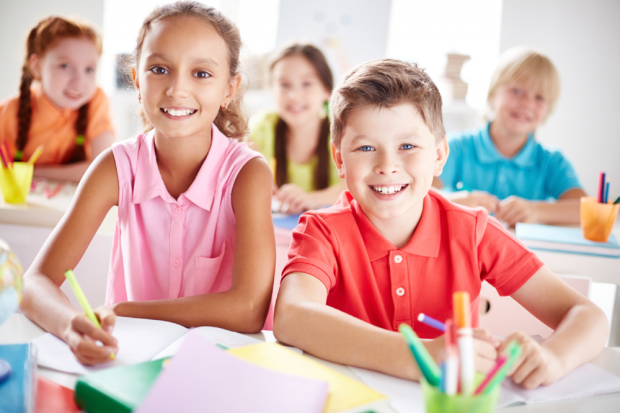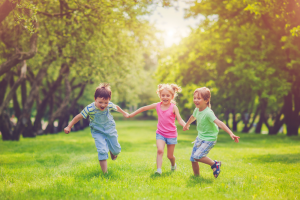Barefoot Brain Power Children With No Shoes On "Do Better And Behave Better" In Classroom
Kids who don’t wear shoes in the classroom obtain higher grades and behave better than children who wear shoes at school, a decade-long study reveals.
Reading, writing and arithmetic are some of the staples of a good education, but a decade-long study reveals that heading into the classroom sans shoes could also be one of the keys to a good education.
Inspired by schools in Scandinavia, where the practice is considered normal, researchers at the University of Bournemouth followed children in over 100 schools in 25 different countries for the past 10 years and found that children who leave their shoes outside the classroom arrive to school earlier, leave later, read more frequently, behave better and are more engaged in their lessons than their shoe-clad counterparts — all of which ultimately results in better academic achievement overall.
Apart from Scandinavia, the researchers visited schools in Australia, New Zealand and West London, the latter of which had the team studying children’s behavior and academic results all the way through university. At the end of the study, the researchers said they believe that children who take their shoes off before entering the classroom “feel at home” and more relaxed while learning, which boosts performance.
“Children are much more willing to sit on the floor and relax if they have no shoes on,” says Stephen Heppell, lead researcher and Professor at the Centre for Excellence in Media Practice at Bournemouth University. “The last place a child would sit to read is an upright chair and we’ve found that 95 per cent of them actually don’t read on a chair at home. When they go on holidays the read lying down. Having conditions in the classroom that are like those at home means that more [kids] are reading in the classroom.”
The homey feeling may also be what’s responsible for shoeless children arriving to class earlier and staying later than kids who wear shoes in the classroom — which translates, on average, to half an hour of extra learning per day. “The key to attainment is engagement and if children want to be there and enjoy being there, universally they do better,” Heppell says. “When they arrive late and leave early and are disengaged, their performance suffers. Kids with shoes on are less engaged than those without shoes.”
What’s more, the study found that bullying rates in schools that have no-shoe policies are markedly reduced. “It seems to be difficult to be a bully with your shoes off,” notes Heppell. “All the places we’ve been where kids have their shoes off, they report calmness.”
However, not everyone agrees that implementing a shoeless classroom is the best approach to improve learning habits. Secondary school teacher Tom Starkey told The Guardian that schools shouldn’t fall for quick fixes. “It’s the shoes [that are a problem], or the food, or the color of the uniform. It’s more complicated than that,” he warns. “It’s about socio-economic background, what’s going on in the school, teaching approach. Focusing on one thing – such as shoes, which is cute – sometimes shifts the focus away from things that are more important.”
Notice concerning medical entries:
Articles having medical content shall serve exclusively for the purpose of general information. Such articles are not suitable for any (self-) diagnosis and treatment of individual illnesses and medical indications. In particular, they cannot substitute for the examination, advice, or treatment by a licensed physician or pharmacist. No replies to any individual questions shall be effected through the articles.






